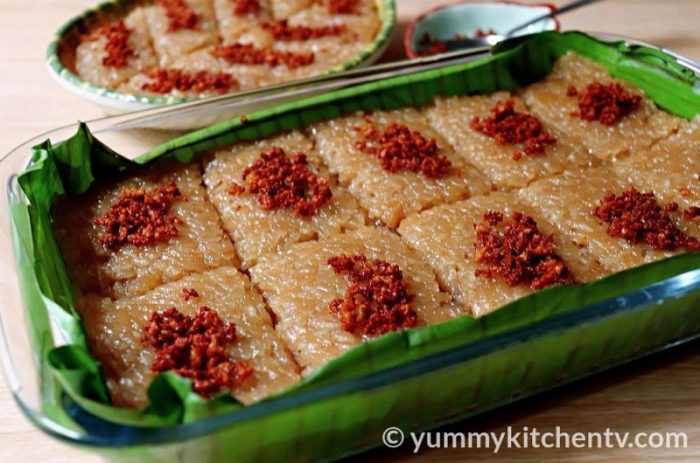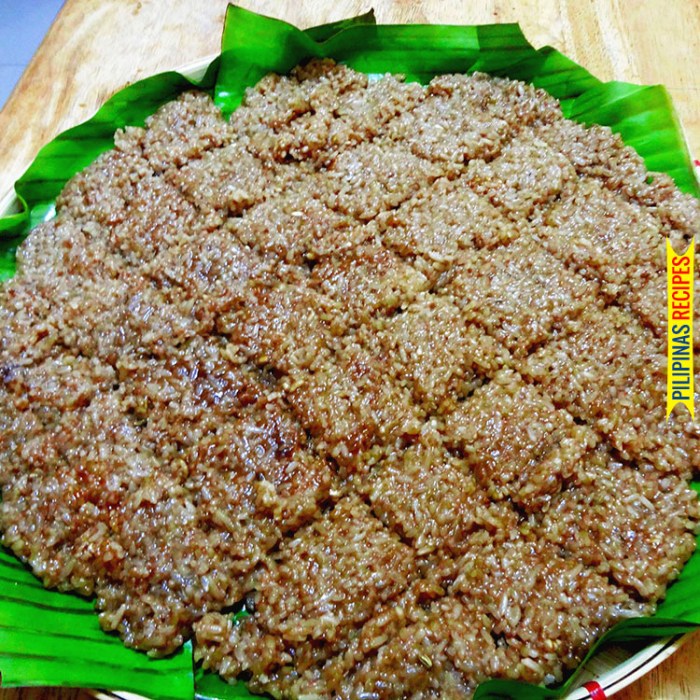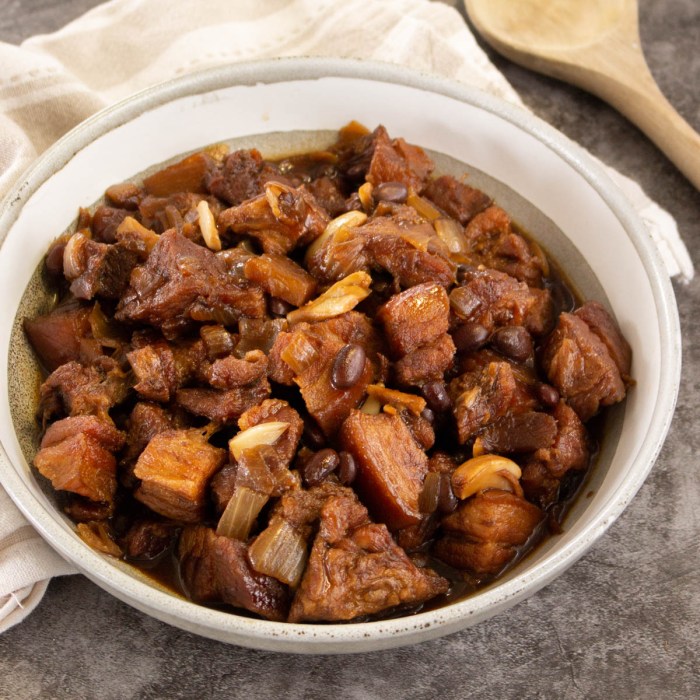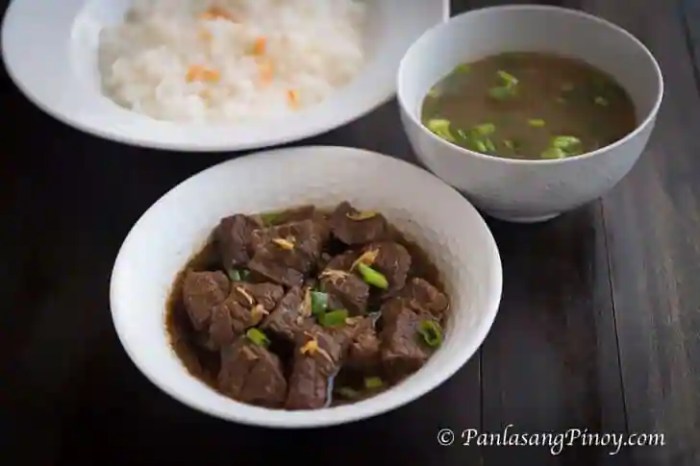Introduction to Biko
How to cook biko filipino style – Biko is a traditional Filipino dessert made from glutinous rice, coconut milk, and brown sugar. It is a popular dish served during special occasions and celebrations in the Philippines. The sweet and sticky texture of biko makes it a favorite among locals and foreigners alike.
Ingredients for Biko
To make biko, you will need the following ingredients:
- 2 cups glutinous rice
- 2 cups coconut milk
- 1 1/2 cups brown sugar
- 1/2 cup water
- 1/2 teaspoon salt
- 1 teaspoon vanilla extract (optional)
Steps to Cook Biko: How To Cook Biko Filipino Style
Follow these steps to cook delicious biko Filipino style:
Step 1: Prepare the Glutinous Rice

Wash the glutinous rice thoroughly and soak it in water for at least 30 minutes. Drain the rice before cooking.
Step 2: Cook the Glutinous Rice
In a large saucepan, combine the soaked glutinous rice, coconut milk, water, and salt. Bring to a boil over medium heat, then reduce the heat to low and simmer until the rice is cooked and the mixture is thick and sticky.
When it comes to showing support for your favorite sports team, decorating car windows can be a fun and creative way to display your team spirit. You can use window clings, decals, or paint to customize your vehicle. To learn more about how to decorate car windows for sports, check out this helpful guide: how to decorate car windows for sports.
Step 3: Add Brown Sugar
Once the rice is cooked, add the brown sugar and vanilla extract (if using) to the mixture. Stir well until the sugar is fully dissolved and the biko is sweet and flavorful.
Step 4: Simmer and Serve
Continue to simmer the biko mixture until it reaches your desired consistency. Transfer the biko to a serving dish and let it cool before serving. Enjoy your delicious biko Filipino style!
Tips for Cooking Biko
Here are some tips to help you make the perfect biko:
- Use fresh coconut milk for the best flavor.
- Be patient when cooking the glutinous rice to achieve the right texture.
- Adjust the amount of brown sugar according to your sweetness preference.
- Feel free to add toppings like latik (coconut curds) or toasted sesame seeds for extra flavor.
Conclusion
Learning how to cook biko Filipino style is a fun and rewarding experience. With the right ingredients and techniques, you can create a delicious and sweet treat that will delight your taste buds. So gather your ingredients, follow the steps, and enjoy a taste of Filipino cuisine with homemade biko!
FAQs (Frequently Asked Questions)

1. Can I use regular rice instead of glutinous rice for biko?
Glutinous rice is essential for biko as it provides the sticky texture that is characteristic of this dessert. Using regular rice may not yield the same results.
2. How long can I store biko?, How to cook biko filipino style
You can store biko in an airtight container in the refrigerator for up to 3-4 days. Reheat before serving for the best taste and texture.
3. Can I use coconut cream instead of coconut milk?
Coconut milk is preferred for biko as it provides a lighter texture and flavor. Coconut cream may make the biko too rich and heavy.
When it comes to showing support for your favorite sports team, decorating your car windows can be a fun and creative way to display your enthusiasm. From car window paint to decals and flags, there are many options available. For tips and ideas on how to decorate car windows for sports, check out this helpful guide on how to decorate car windows for sports.
4. Can I freeze biko for later consumption?
While biko can be frozen, the texture may change slightly upon thawing. It is best enjoyed fresh or stored in the refrigerator for a few days.
5. Can I make biko without brown sugar?
Brown sugar is traditionally used in biko for its rich flavor and caramelization. You can try using alternative sweeteners, but the taste may differ from the traditional biko recipe.






0